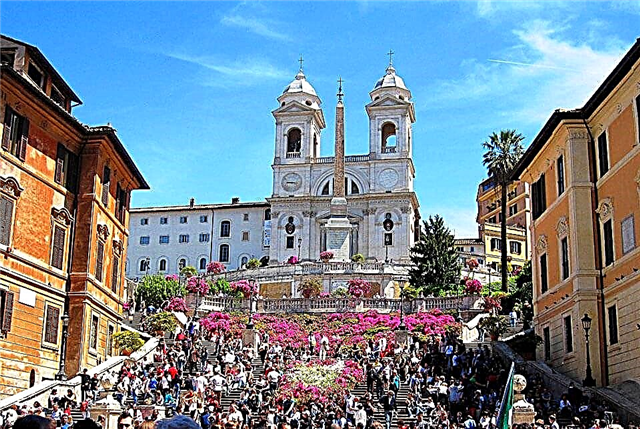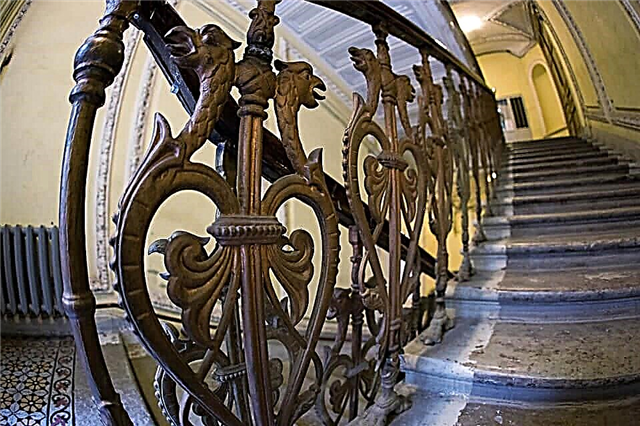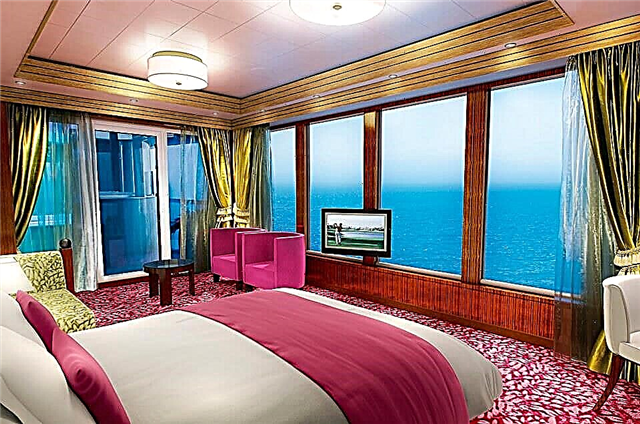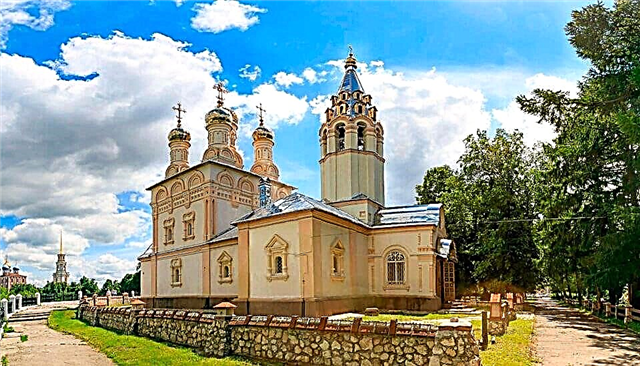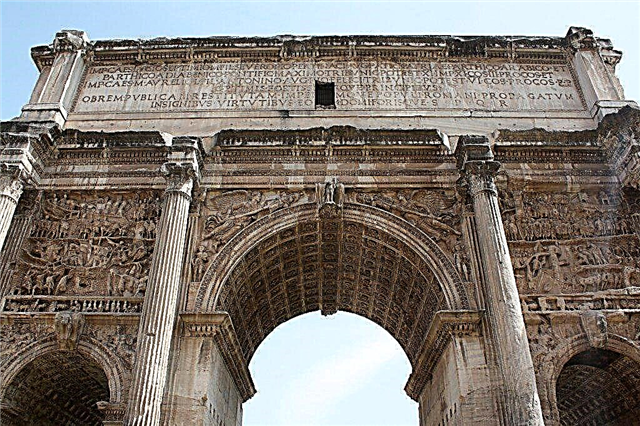Rome is considered the cradle of Western civilization. The city is full of unique monuments and buildings that characterize the culture and history of the ancient Roman Empire. A difficult state transition from a republic to an empire, internal confrontations between oligarchic communities, endless military campaigns - all these reviews of the past are reflected in architectural masterpieces. Monumental structures are an integral continuation of the politics of Ancient Rome. Triumphal arches were built in honor of the merits of the emperors. The bas-reliefs and columns of buildings personified the victories and military power of the state.
Construction history

In the III century, the Roman Empire was ravaged by the invasions of the ancient Germanic tribes. The internal political turmoil prevailing at that time did not add stability to this confrontation. The state consisted of several provinces, in which governors ruled with their army. Each of them strove to become an emperor. In such a difficult situation, a leader appeared who managed to unite the country. It was Constantine, who later became Great.
Constantine received an excellent military education. His father Constantius Chlorus led the Western Roman Empire. Prospects for achieving a lofty goal opened before the young man. The young commander successfully fought against the barbarians on the banks of the Rhine. Constantine established himself as a brave and gifted strategist, which contributed to the acquisition of authority among the military. After the death of his father, the army proclaimed Constantine a pretender to the imperial throne. To gain full power, it was necessary to defeat the inner enemy.
In 306, Rome was ruled by the usurper Maxentius, who is a militant pagan. He made any decision he made, guided by the fortune-telling of the priests on sheep's entrails. Constantine, having enlisted the support of other co-rulers of the provinces of Rome, outlaws the tyrant Maxentius and prepares a military campaign against the capital. The commander with his army approaches the Tiber River, which was considered the only obstacle on the road to Rome.
There he was met by Maxentius with an army, many times superior in number to the army of Constantine. In 312, a fierce battle began on the banks of the river, during which Maxentius was defeated. In a shameful flight, the usurper drowned in the waters of the Tiber. Constantine becomes the sole ruler of the Western Roman Empire.

In 315, by decision of the Roman Senate, a triumphal arch was erected, symbolizing the victory of Constantine over the tyrant. The architectural structure was built and decorated with fragments taken from other ancient monuments of the city. This was the special political plan of Constantine. The idea of collecting decorative elements of different times into a single ensemble was to consolidate society after the Civil War. Bas-reliefs and panels were taken depicting the events and exploits of the previous rulers of Rome.
It is worth highlighting one important aspect related to the spiritual values of Emperor Constantine. There are no symbols of Christianity on the triumphal arch. On the contrary, the bas-reliefs of the arch describe scenes of pagan sacrificial rites. There is evidence that during the climactic battle against Maxentius, the monograms of the cross of Jesus were depicted on the shields of soldiers of Constantine's army.
The future emperor believed that good luck would accompany him with the Christian banner. During the construction of the arch, Constantine behaved like a careful diplomat. In order to prevent a split in society, he decided to unite it later with a single religious movement - Christianity.
Description

The Arc de Triomphe has three spans. The main part of the monument was erected from marble blocks. The structure is over 20 meters high and 25 meters wide. The architectural structure is framed by eight marble columns, four on each side. There are also sculptural compositions installed here. The bases of the pilasters are decorated with images of Roman soldiers, captive barbarians and the goddess of victory Victoria.

The second tier of the arch is represented by eight large tondos framed with red stone (porphyry). The images represent different episodes from the life of Emperor Hadrian. Each medallion separately is a scene of hunting and sacrifice to the gods. The relief compositions depict the departure of the emperor on a hunt with his retinue. One of his companions holds the horse by the bridle, the other leads the dog on a leash. Participants in the raid are fighting a bear, a wild boar and a lion.
On other medallions, hunters can be seen bringing gifts to the forest god Sylvanas, as well as Apollo, Hercules and Diana. Tondo have nothing to do with military victories, but their placement on the arch symbolizes the success of the emperor in all areas of his activities.

A sculptural frieze is visible along the entire middle part of the arch, characterizing the military exploits of Constantine. This composition is made rather primitive, unlike other bas-reliefs. There is a lack of clarity and proportionality of the lines of the sculptures. These scenes are more ideological than artistic accuracy. The commander with his army goes on a campaign, besieges cities, victoriously fights with Maxentius and then enters Rome. On the other side of the arch, the emperor is depicted distributing money to the people.
Attic decoration

The upper level of the arch is considered a true masterpiece of ancient Roman art. The freestanding statues at the top of the columns attract attention. These are the figures of enemies, conquered by Emperor Trajan. The sculptures are dressed in long trousers, cloaks and pointed hats, which testify to the images of barbarians. After all, the Romans wore only togas. Representatives of ancient tribes are shown in defeated poses: heads are lowered, hands are folded together. Bas-reliefs are installed between the statues, reflecting the attack of the Roman cavalry and the onslaught of the legion on the barbarians.
The attic of the northern part of the arch is represented by several scenes describing the political situation in the Roman state under the Emperor Aurelius. The sculptures depict military operations against the Sarmatians in 169. The figures are executed with the scrupulous precision of small details. The emperor is dressed in different robes: a short tunic, a mantle, or a marching cloak. The soldiers are depicted in armor, helmets with shields and weapons. The bas-relief depicts the scene of the ruler addressing the army with an inspiring speech.
The composition, which tells about the interrogation of the captured German leader, is impressive. Nearby are informative sculptures demonstrating the triumphant return of Marcus Aurelius to Rome after the military campaign, the distribution of money to the people and the ritual of purification by sacrifice. The central part of the attic is decorated with an inscription expressing gratitude to Constantine for the liberation of Rome from tyranny and oppression.
Where is it located and how to get there
The Arc de Triomphe of Constantine is located in the center of Rome near the Colosseum and the Roman Forum. Tourists can use the metro service, arriving at the Solosseo station. The arch can be reached by public transport. Quite a lot of bus routes run to the attraction.


